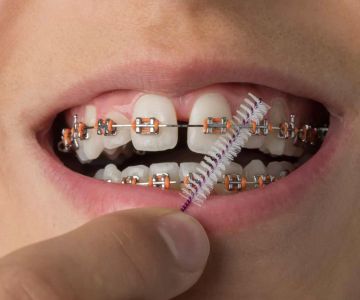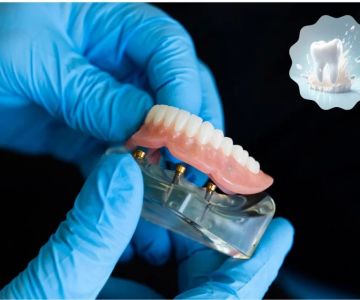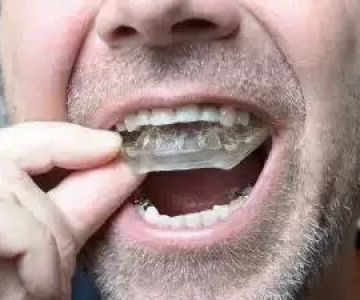
Understanding a Tooth Abscess: Causes and Symptoms
A tooth abscess is a pocket of pus that forms as a result of a bacterial infection in the tooth or surrounding gums. It is a common dental issue that can cause significant pain, swelling, and discomfort. Understanding the causes of a tooth abscess is crucial for effective treatment.
The primary cause of a tooth abscess is bacterial infection, often originating from untreated cavities, gum disease, or tooth trauma. The infection can spread to the root of the tooth, forming a pus-filled sac. When the abscess is left untreated, it can lead to severe complications such as tooth loss or the spread of infection to other parts of the body.
Some common symptoms of a tooth abscess include:
- Severe tooth pain that may worsen when chewing or touching the affected tooth
- Swelling in the gums or face
- Sensitivity to hot or cold foods and drinks
- Fever or general malaise
- Bad breath or an unpleasant taste in the mouth
How to Treat a Tooth Abscess at Home
If you suspect you have a tooth abscess, it's important to seek professional dental care as soon as possible. However, there are several home remedies that can help alleviate symptoms and manage the pain while waiting for your dentist appointment. These remedies may help reduce inflammation, relieve pain, and support healing until you can receive professional care.
1. Warm Saltwater Rinse
A warm saltwater rinse is one of the simplest and most effective ways to reduce swelling and kill bacteria around the affected tooth. Salt has natural antibacterial properties that can help cleanse the area and promote healing. To make a saltwater rinse, mix a teaspoon of salt in a glass of warm water, swish it around your mouth for 30 seconds, and spit it out. Repeat this process several times a day.
2. Cold Compress for Pain Relief
Applying a cold compress to the outside of your cheek can help reduce pain and swelling associated with a tooth abscess. The cold numbs the area and reduces inflammation, providing temporary relief. Wrap ice cubes or an ice pack in a clean cloth and place it on the affected side of your face for 15-20 minutes. Repeat every hour as needed.
3. Over-the-Counter Pain Relievers
Non-prescription pain relievers like ibuprofen (Advil) or acetaminophen (Tylenol) can help manage the discomfort caused by a tooth abscess. These medications are designed to reduce pain and inflammation. Be sure to follow the dosage instructions on the label and avoid taking them for extended periods without consulting a doctor.
4. Garlic for Its Natural Antibacterial Properties
Garlic is well-known for its natural antibacterial and anti-inflammatory properties. You can use garlic as a home remedy for a tooth abscess by crushing a garlic clove and applying it directly to the abscessed area. Alternatively, you can chew a piece of garlic to release its juices, which can help combat the infection. Be mindful that garlic may cause some irritation, so limit its application to avoid further discomfort.
5. Tea Tree Oil for Antibacterial Benefits
Tea tree oil is another powerful natural remedy with antibacterial properties that can help combat the infection causing the abscess. Dilute a few drops of tea tree oil with a carrier oil, such as coconut oil or olive oil, and apply it to the affected area using a cotton ball. Be sure to rinse your mouth thoroughly afterward, as tea tree oil can be potent if left on the skin for too long.
6. Turmeric Paste for Inflammation Reduction
Turmeric contains curcumin, a compound known for its anti-inflammatory and antibacterial properties. You can make a paste using turmeric powder and water and apply it directly to the abscessed tooth or gum. This paste may help reduce pain and inflammation while supporting the healing process. Be aware that turmeric can stain clothing and surfaces, so be cautious when applying it.
7. Clove Oil for Numbing Pain
Clove oil has long been used in dental care due to its natural numbing and antiseptic properties. It can help temporarily relieve pain from a tooth abscess. Dab a small amount of clove oil onto a cotton ball and gently apply it to the affected area. Alternatively, you can chew a whole clove to release its oil and apply it to the abscess. This method offers short-term relief but should not replace professional dental care.
When to See a Dentist
While home remedies can help manage the symptoms of a tooth abscess, they are not a substitute for professional dental treatment. It's essential to see a dentist as soon as possible to properly treat the infection and prevent further complications. If left untreated, a tooth abscess can lead to serious health issues such as sepsis, jaw bone infection, or the spread of infection to other parts of the body.
If the abscess ruptures, you may experience a temporary decrease in pain as the pus drains out. However, this does not mean the infection is gone. Your dentist will likely need to drain the abscess and may prescribe antibiotics to fully eliminate the infection. In some cases, a root canal or tooth extraction may be necessary to prevent further damage to the tooth.
Real-Life Example: Overcoming a Tooth Abscess
One patient, Jane, found herself in excruciating pain after developing a tooth abscess. She used some of the home remedies mentioned, such as warm saltwater rinses and cold compresses, which helped alleviate her pain while she waited for a dentist appointment. When she saw the dentist, she was diagnosed with a severe infection that required a root canal. Jane's experience shows how important it is to seek professional care even if home remedies provide temporary relief.
Managing a tooth abscess at home can be challenging, but with the right remedies and timely dental care, you can effectively reduce symptoms and support your oral health. Always prioritize seeing a dentist when you suspect an abscess to prevent complications and ensure a full recovery.







 Westgate Dental Arts
Westgate Dental Arts Coventry Family Dental
Coventry Family Dental Familia Dental
Familia Dental Dr. Daniel S. Fife, DDS
Dr. Daniel S. Fife, DDS Dentistry At Suburban Square: Michael I. Wollock, DMD
Dentistry At Suburban Square: Michael I. Wollock, DMD Comfort Care Dental
Comfort Care Dental The Importance of Oral Health Education During Pregnancy for a Healthy Pregnancy
The Importance of Oral Health Education During Pregnancy for a Healthy Pregnancy Why Skipping Dental Checkups Can Lead to Bigger Oral Health Problems
Why Skipping Dental Checkups Can Lead to Bigger Oral Health Problems Advantages of Porcelain Dental Restorations
Advantages of Porcelain Dental Restorations Best Tips for Brushing Your Teeth Properly for Healthy Gums: Essential Techniques for Oral Health
Best Tips for Brushing Your Teeth Properly for Healthy Gums: Essential Techniques for Oral Health How Can Diabetes Cause Tooth and Gum Problems? Preventing and Managing Oral Health Issues
How Can Diabetes Cause Tooth and Gum Problems? Preventing and Managing Oral Health Issues Healthy Habits for Promoting Good Oral Health and Hygiene: Tips for a Healthy Smile
Healthy Habits for Promoting Good Oral Health and Hygiene: Tips for a Healthy Smile